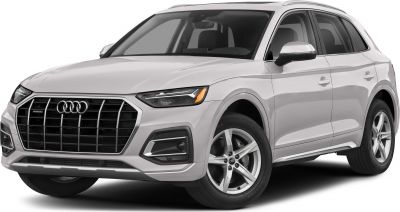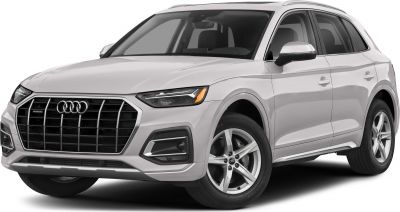 2002 Volkswagen Touareg I (7L) Dimensions, Size & Specs
2002 Volkswagen Touareg I (7L) Dimensions, Size & SpecsMeasurements of the 2002 Volkswagen Touareg I, engineered for optimal performance and comfort
| Dimensions | |
|---|---|
| Length: | 4754 mm187.2 in15.6 ft |
| Width: | 1928 mm75.9 in6.3 ft |
| Width (Opened Mirrors): | 2217-2230 mm87.3-87.8 in7.3-7.3 ft |
| Height: | 1703-1726 mm67.0-68.0 in5.6-5.7 ft |
| Ground Clearance: | 237 mm9.3 in0.8 ft |
| Trunk Capacity: | 500-555 liter17.7-19.6 cu ft |
| Trunk Capacity (Max): | 1525-1570 liter53.9-55.4 cu ft |
| Weight Specifications | |
| Curb Weight: | 2229-2602 kg4914-5736 lbs |
| Maximal permitted Weight: | 2850-3200 kg6283-7055 lbs |
| Roof Load: | 100 kg220 lbs |
| Tire Specifications | |
| Rims Sizes: | 17-inch rims:
|
| Tire Sizes: |
|
The Volkswagen Touareg I (7L), produced from 2002 to 2006, is a mid-size luxury SUV that combines robust dimensions with premium features. Measuring 4754 mm (187.0 inches) in length and 1928 mm (75.9 inches) in width, this SUV strikes a balance between spaciousness and maneuverability. With mirrors opened, the width expands to between 2217 mm and 2230 mm (87.3 - 87.8 inches), illustrating its substantial road presence. The vehicle's height ranges from 1703 mm to 1726 mm (67.0 - 67.9 inches), contributing to its commanding stance and comfortable interior headroom.
The Touareg I rides on rim sizes ranging from 17 to 20 inches, with popular tire sizes including 235/65 R17, 255/55 R18, 275/40 R20, and 255/60 R17, optimizing both on-road comfort and off-road capability. Its ground clearance of 237 mm (9.3 inches) allows confident handling over uneven terrain, enhancing its versatility as an SUV.
Weight varies between 2229 kg and 2602 kg (4914 - 5737 lbs) curb weight depending on the trim and equipment, while its maximum allowable weight ranges from 2850 kg to 3200 kg (6283 - 7055 lbs). This robust build supports a strong towing and payload capacity.
The Volkswagen Touareg I offers a practical luggage capacity of 500 to 555 liters (17.7 - 19.6 cubic feet) with all seats in use, which expands impressively to between 1525 and 1570 liters (53.8 - 55.4 cubic feet) when rear seats are folded down, making it ideal for families and long trips. A roof load limit of 100 kg (220 lbs) accommodates additional cargo or roof-mounted accessories.
Overall, the Volkswagen Touareg I (7L) from 2002 to 2006 delivers a balanced combination of size, comfort, and utility. It suits buyers seeking a premium SUV designed to handle both urban environments and off-road challenges with substantial space and solid build quality.
Discover the standout features that make the 2002 Volkswagen Touareg I a leader in its class
Have a question? Please check our knowledgebase first.
The Volkswagen Touareg I (7L), produced from 2002 to 2006, has an overall length of 4754 mm (187.1 inches), a width of 1928 mm (75.9 inches) excluding mirrors, and a height ranging from 1703 mm to 1726 mm (67.0 to 67.9 inches). These dimensions place it comfortably within the mid-size luxury SUV category, offering a spacious exterior footprint suited for both urban driving and off-road capabilities. The width expands to between 2217 mm and 2230 mm (87.3 to 87.8 inches) when side mirrors are opened, an important consideration for parking and maneuvering in tight spaces.
The curb weight of the Volkswagen Touareg I (7L) varies between 2229 kg and 2602 kg (4915 to 5737 lbs), depending on the specific engine, trim, and options fitted. This substantial weight contributes to the SUV’s solid road presence and stability, especially beneficial for off-road driving and highway cruising. However, the heavier weight may slightly impact fuel economy and acceleration compared to lighter SUVs. The maximum permissible weight ranges from 2850 kg to 3200 kg (6283 to 7055 lbs), accommodating passengers and cargo safely within the vehicle’s design limits.
The 2002 Volkswagen Touareg I offers flexible cargo space to accommodate varying storage needs. With the rear seats in their upright position, the luggage capacity is between 500 to 555 liters (17.7 to 19.6 cubic feet), providing ample room for everyday items or moderate vacation packing. When the rear seats are folded down, this capacity substantially increases to a range between 1525 and 1570 liters (53.8 to 55.4 cubic feet), allowing the transport of larger items or bulky loads. This versatility makes the Touareg particularly practical for families or those needing expanded cargo space occasionally.
Most standard home garages have an average internal width of about 2400 mm (94.5 inches), depth of 6000 mm (236 inches), and height of around 2100 to 2300 mm (83 to 90 inches). The Touareg I’s width of 1928 mm (75.9 inches) and height between 1703 mm and 1726 mm (67.0 to 67.9 inches) ensure it generally fits comfortably within the width and height limits of a standard garage. Even accounting for the side mirrors, which add up to roughly 2217 to 2230 mm (87.3 to 87.8 inches) in width, it remains within typical garage widths. The length of 4754 mm (187.1 inches) is well within average garage depth, meaning parking the Touareg I in a standard garage should pose no issue.
The Volkswagen Touareg I (7L) offers a ride height, or ground clearance, of 237 mm (9.3 inches). This substantial clearance suits it well for off-road driving, reducing the risk of damage to the undercarriage when traversing rough terrain, rocks, or uneven surfaces. It also aids in approaching steep inclines or deep ruts without bottoming out. Compared to many standard SUVs with lower clearance, this feature affirms the Touareg I’s design intention as a capable off-roader with a balance between on-road comfort and rugged terrain adaptability.
With side mirrors extended, the Volkswagen Touareg I’s width expands to between 2217 mm and 2230 mm (87.3 to 87.8 inches). Drivers need to be mindful of this extra width when navigating tight urban spaces, narrow lanes, or parking spots, as the mirrors add roughly 290 to 300 mm (11.4 to 11.8 inches) on each side compared to the body width alone. It’s advisable to check clearance carefully to avoid scraping mirrors, particularly in congested spaces or parking garages where width restrictions apply.
The Volkswagen Touareg I originally came with several tire and rim configurations to balance ride comfort, handling, and off-road ability. Rim sizes include 7.5J x 17, 7.5J x 18, and 8J x 20 inches. Corresponding tire sizes are 235/65 R17, 255/55 R18, 255/60 R17, and 275/40 R20. Each setup affects the handling characteristics slightly, with larger rims and lower-profile tires (such as the 20-inch rims with 275/40 tires) generally offering sportier on-road performance, while smaller rims with taller tire profiles (17- or 18-inch rims) improve off-road ride comfort and durability.
The Volkswagen Touareg I (7L), launched in 2002, was Volkswagen’s first generation of this model, so it had no predecessor. It established the size and design template for a mid-size luxury SUV with off-road capability that combined Volkswagen’s engineering with premium features. The launch generation was benchmarked against competitors rather than a predecessor, defining dimensions like length of 4754 mm, width approximately 1928 mm excluding mirrors, and a solid ride height for rugged use. Its introduction set new standards for Volkswagen in the SUV segment.
In the early 2000s, the Volkswagen Touareg I (7L) measured up competitively against other mid-size luxury SUVs like the BMW X5 (E53) and Mercedes-Benz ML-Class (W163). With a length of 4754 mm (187.1 inches), it was slightly longer than the BMW X5 (approx. 4700 mm) and similar to the ML-Class, offering generous passenger and cargo space. Its width of 1928 mm (75.9 inches) was on par with rivals, contributing to stability and interior room. The ground clearance and robust curb weight underscored its off-road talent, often surpassing competitors more tuned for on-road use. Overall, the Touareg balanced size, luxury, and ruggedness within its class.
The Volkswagen Touareg I (7L) has a maximum roof load capacity of 100 kg (220 lbs). This rating is designed to accommodate typical roof-mounted accessories such as roof boxes, bike racks, ski racks, or modest cargo baskets. It’s important to distribute weight evenly and secure loads properly to avoid damage or imbalance. The roof load limit ensures that the structural integrity and driving dynamics are maintained without compromising safety. Users should also consider the aerodynamic effects and increased fuel consumption associated with roof loads.
Discover similar sized cars.

| Production: | 2021-present |
|---|---|
| Model Year: | 2022 |
| Length: | 4715 mm185.6 in |
| Width: | 2138 mm84.2 in |
| Height: | 1665 mm65.6 in |

| Production: | 2018-2021 |
|---|---|
| Model Year: | 2018 |
| Length: | 4718 mm185.7 in |
| Width: | 1897 mm74.7 in |
| Height: | 1655 mm65.2 in |

| Production: | 2025-present |
|---|---|
| Model Year: | 2025 |
| Length: | 4717 mm185.7 in |
| Width: | 2155 mm84.8 in |
| Height: | 1619-1664 mm63.7-65.5 in |

| Production: | 2025-present |
|---|---|
| Model Year: | 2025 |
| Length: | 4717 mm185.7 in |
| Width: | 2155 mm84.8 in |
| Height: | 1614-1669 mm63.5-65.7 in |

| Production: | 2020-2024 |
|---|---|
| Model Year: | 2021 |
| Length: | 4689 mm184.6 in |
| Width: | 2140 mm84.3 in |
| Height: | 1609-1660 mm63.3-65.4 in |

| Production: | 2020-2024 |
|---|---|
| Model Year: | 2021 |
| Length: | 4682 mm184.3 in |
| Width: | 2140 mm84.3 in |
| Height: | 1637-1662 mm64.4-65.4 in |

| Production: | 2024-present |
|---|---|
| Model Year: | 2025 |
| Length: | 4717 mm185.7 in |
| Width: | 2155 mm84.8 in |
| Height: | 1649-1671 mm64.9-65.8 in |

| Production: | 2020-2024 |
|---|---|
| Model Year: | 2021 |
| Length: | 4689 mm184.6 in |
| Width: | 2140 mm84.3 in |
| Height: | 1633 mm64.3 in |
